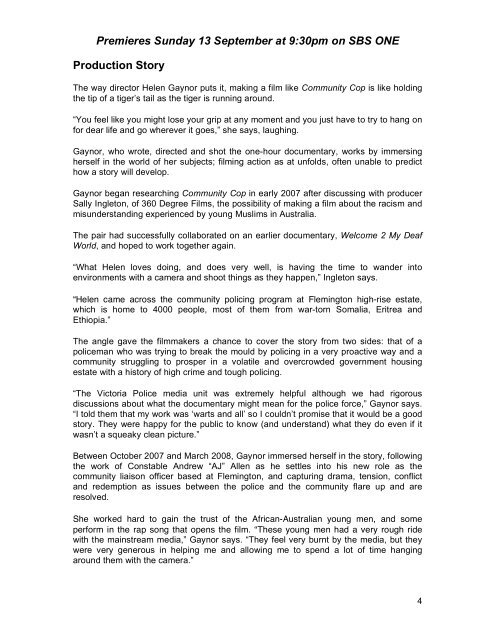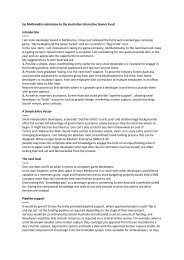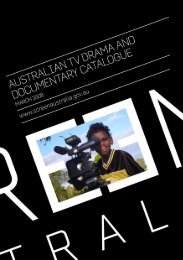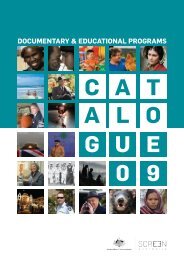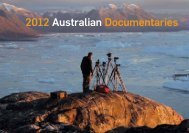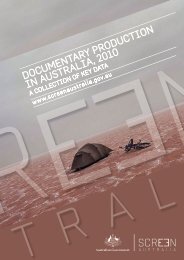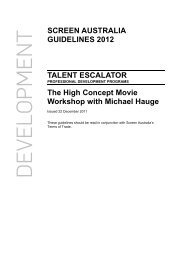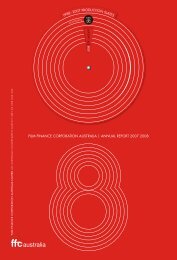COMMUNITY COP - Screen Australia
COMMUNITY COP - Screen Australia
COMMUNITY COP - Screen Australia
You also want an ePaper? Increase the reach of your titles
YUMPU automatically turns print PDFs into web optimized ePapers that Google loves.
Premieres Sunday 13 September at 9:30pm on SBS ONE<br />
Production Story<br />
The way director Helen Gaynor puts it, making a film like Community Cop is like holding<br />
the tip of a tiger’s tail as the tiger is running around.<br />
“You feel like you might lose your grip at any moment and you just have to try to hang on<br />
for dear life and go wherever it goes,” she says, laughing.<br />
Gaynor, who wrote, directed and shot the one-hour documentary, works by immersing<br />
herself in the world of her subjects; filming action as at unfolds, often unable to predict<br />
how a story will develop.<br />
Gaynor began researching Community Cop in early 2007 after discussing with producer<br />
Sally Ingleton, of 360 Degree Films, the possibility of making a film about the racism and<br />
misunderstanding experienced by young Muslims in <strong>Australia</strong>.<br />
The pair had successfully collaborated on an earlier documentary, Welcome 2 My Deaf<br />
World, and hoped to work together again.<br />
“What Helen loves doing, and does very well, is having the time to wander into<br />
environments with a camera and shoot things as they happen,” Ingleton says.<br />
“Helen came across the community policing program at Flemington high-rise estate,<br />
which is home to 4000 people, most of them from war-torn Somalia, Eritrea and<br />
Ethiopia.”<br />
The angle gave the filmmakers a chance to cover the story from two sides: that of a<br />
policeman who was trying to break the mould by policing in a very proactive way and a<br />
community struggling to prosper in a volatile and overcrowded government housing<br />
estate with a history of high crime and tough policing.<br />
“The Victoria Police media unit was extremely helpful although we had rigorous<br />
discussions about what the documentary might mean for the police force,” Gaynor says.<br />
“I told them that my work was ‘warts and all’ so I couldn’t promise that it would be a good<br />
story. They were happy for the public to know (and understand) what they do even if it<br />
wasn’t a squeaky clean picture.”<br />
Between October 2007 and March 2008, Gaynor immersed herself in the story, following<br />
the work of Constable Andrew “AJ” Allen as he settles into his new role as the<br />
community liaison officer based at Flemington, and capturing drama, tension, conflict<br />
and redemption as issues between the police and the community flare up and are<br />
resolved.<br />
She worked hard to gain the trust of the African-<strong>Australia</strong>n young men, and some<br />
perform in the rap song that opens the film. “These young men had a very rough ride<br />
with the mainstream media,” Gaynor says. “They feel very burnt by the media, but they<br />
were very generous in helping me and allowing me to spend a lot of time hanging<br />
around them with the camera.”<br />
4


